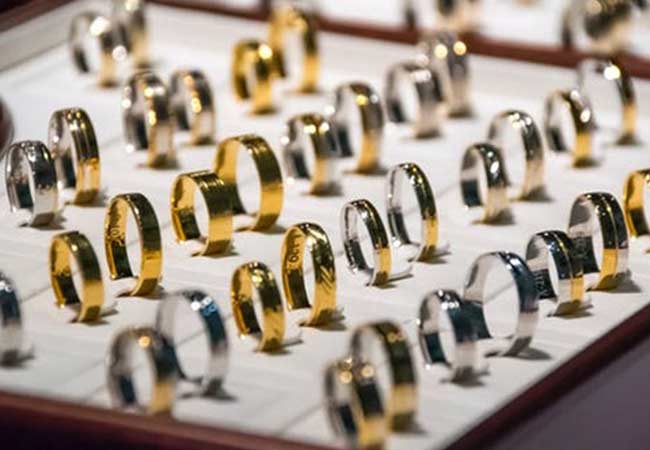Gold jewelry is typically labeled 24k, 22k, 18k, 10K and of course, 14K. Understanding how these labeling work and what each stamp represents is vital for choosing the right gold to wear. Whether you are buying or trying to appraise your gold jewelry before a sale, this is an important part of the research process that cannot be overlooked. Information like this and more are available on https://blog.goldiesjewelry.com. This article is a simple guide that will aid your understanding of what a 14k white gold stamp and other labels represent.

What does the stamp mean?
The markings or labels on a piece of white gold jewelry typically represents the gold content of the item. In some cases, this is just in the form of a single number such as “14k” stamped on it. However, it can also bear additional numbers or even a company logo as well. These numbers provide additional information about the quality of the jewelry you intend to buy. The list below includes some popular markings and variants you might encounter and what they mean:
14K P: the P in this label represents plumb gold and shows that the jewelry is made from plumb gold.
14K with a company logo: the logo of the manufacturer may be printed on the jewelry.
585: numbers like this provide additional information about the quality of the gold in the accessory especially when it has been mixed with other alloys. This label means jewelry contains approximately 58.5% of gold with the rest being other metals. You can also encounter similar labels such as 417 (which represents 41.7% gold) 0r 999 (which represents 99.9% gold) and so on.
Gold jewelry with the kind of markings indicated above are most likely to be authentic. However, other types of labels show that the jewelry isn’t real gold but has been gold filled or plated with gold.
14K 1/20 pr 14K G.F: if your gold accessory bears these stamps, then it is not real gold but is merely gold filled.
14K G.P: this stamp indicates that the jewelry has been plated with gold.
14K H.G.E or 14 G.E.P: this mark is stamped in an accessory means that it has been plated using a Gold Electroplate (HGE means Hydrostatic Gold Electroplate).
Jewelries with these types of markings are made from other types of alloy and coated with a thin layer of gold. Such jewelry items will begin to show signs of wear over time.
Note: Although the stamp on a piece of jewelry can be an indicator of authenticity, bear in mind that a piece of jewelry with any of the stamps above is cannot be automatically declared as real. There are a lot of fake jewelry items that are labeled this way to convince novice buyers of their authenticity. Conversely, the fact that a piece of gold jewelry does not have any of the signs listed above does not mean it is fake. Some jewelry manufacturers don’t add the gold content stamp on their jewelry.
The best way to determine whether gold jewelry is real or not is to consult a trusted, qualified jeweler with years of experience handling gold jewelry. Using some testing methods, he or she should be able to tell you with certainty if the jewelry you are holding is real or fake.
Some of the tests carried out on gold to determine its authenticity include:
- Using an electronic gold tester: this is a non-corrosive, non-destructive and completely chemical-free method of verifying the quality
- Acids and chemical tests: this is a surer proof of authenticity used by jewelers to verify the content of a piece of gold jewelry. However, this process can cause discoloration or damage to the jewelry especially if it isn’t real gold.
Conclusion
A 14k marking and other types of marks on a piece of gold jewelry give you an idea of the alloy content of the jewelry. However, it is still not an ultimate proof of quality. For that, you need the help of a master appraiser or jeweler who will use any of the methods indicated above or any other means to determine if your bling is authentic or not.